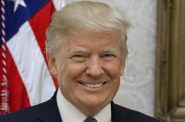The Lessons of Amazon’s City Search
What can Milwaukee learn from from losing its bid for Amazon’s headquarters?
Early this year, Amazon announced the 20 finalists who are possible locations for its second headquarters. To no one’s surprise—and the relief of many Milwaukeeans–Milwaukee failed to make the list. Asking cities for their proposals seems to have two goals: (1) Identifying a city that best meet Amazon’s needs, particularly in staffing and (2) extracting a large amount of funds from that city.
Some skeptics believe that the second goal dominates. Amazon has shown it’s no slouch when it comes to getting local government subsidies, particularly for its distribution centers. It is also a master of analyzing data, suggesting that it does not need the help of local governments when it comes to the analytical part of choosing the second headquarters city. But simply announcing the city that makes most sense for the company would reduce its leverage for obtaining subsidies from that city and its state.
Still, it is useful to look for common elements in the cities that made the first cut. The Brookings Institution tried some reverse engineering on the Amazon decision based on factors that Amazon stressed in its request for proposal. Using US Census data, Brookings matched the finalists against the percentage of adults between the ages of 25 and 34 with a college degree.
Fourteen of the nineteen US finalists (Toronto was the 20th) are in metropolitan areas that rank in the top twenty for this demographic measure. This is shown in the chart below. In most cases there are obvious explanations for why cities in the top 20 metros were not chosen. Either they were too small or too close to Amazon’s existing headquarters. The only really surprising omission is Minneapolis—number 9 in the percentage of college graduates.
That leaves five finalists outside the top 20 metros. Four of these are very large–Atlanta, Los Angeles, Dallas, and Miami—so Amazon may have concluded that sheer numbers made up for a lower percentage of college graduates. Indianapolis is the exception: a finalist while 39th in college graduates and 34th in size.
A big surprise is how well Milwaukee ranks on this metric: 40 percent of Milwaukee’s older Millennials have college degrees placing Milwaukee in 24th place. If indeed the future lies with cities with an educated population, this implies that Milwaukee is in a fairly good position.
That is the good news. The bad news is that between 2010 and 2015, Milwaukee’s Millennial population, aged 18 to 35, grew by only 1.9 percent. According to the same Brookings study, this low percentage growth puts the four-county Milwaukee metropolitan area in 95th place among the hundred largest metros. This would seem to undermine the value of having a well-educated population. Having a higher percentage of college graduates does not do much if they don’t stick around.
One interpretation of Amazon’s 2nd headquarters approach is that it is trying to benefit from two contradictory economic development strategies. One says that the way for a city or state to prosper is to make lavish offers to firms considering establishing facilities. Such offers often combine monetary rewards and relief from regulations. We are seeing a lot of them in Wisconsin.
The first model starts with the need to keep businesses happy. These are, to those on the right, the “job creators.” Since employers create jobs, the thinking goes, the key to prosperity is to keep businesses happy. If they are sufficiently happy, they will build plants and other facilities that employ residents of a state or metro area. The trick to prosperity, then, is to reward these “makers” so that they will choose to build their factory in our state rather than somewhere else.
An extreme version of this model was promoted by Ayn Rand in her novel Atlas Shrugged. In it the main characters are plagued by parasitic “takers” who try to steal their business while contributing little value to the economy. Eventually they discover a libertarian paradise established by the legendary John Galt, who has convinced most of his other makers to go on strike and thus crashing the American economy. In reality one of the strengths of a free market is that the resulting vacuum would be quickly filled by entrepreneurs who viewed the absence of the existing businesses as a great opportunity.
Over the past seven years, Wisconsin’s government has enthusiastically endorsed the business-centric model, reducing taxes on business, eliminating environmental and other regulations, skewing labor law to the management side, and generally following “business friendly” policies. It is really hard to find credible evidence that these policies have had a positive effect on job numbers.
A recent analysis by the Economic Policy Institute of the many government subsidies for Amazon fulfillment centers found:
no evidence that overall employment increased, and in some instances employment even fell relative to comparison counties. The implication was that the commitments made to win Amazon’s facilities ― subsidies likely worth over $1 billion dollars in total ― usually were enough of a drag on the rest of the economy, either by imposing a higher tax burden or diverting resources, to more than offset any jobs and spending created by Amazon.
In searching for a city to house its second headquarters, Amazon and its leader Jeff Bezos seem to be putting a high priority on the city’s quality of life, the environment, and the educational attainment of its population, while crippling the city’s ability to supply those amenities. As Dean Baker wrote, Amazon’s request for proposals might be best viewed as “Jeff Bezos’ quest to find America’s stupidest mayor.”
Data Wonk
-
Why Absentee Ballot Drop Boxes Are Now Legal
 Jul 17th, 2024 by Bruce Thompson
Jul 17th, 2024 by Bruce Thompson
-
The Imperial Legislature Is Shot Down
 Jul 10th, 2024 by Bruce Thompson
Jul 10th, 2024 by Bruce Thompson
-
Counting the Lies By Trump
 Jul 3rd, 2024 by Bruce Thompson
Jul 3rd, 2024 by Bruce Thompson





















Minneapolis isn’t a surprising omission. It’s location is subpar- nothing in three directions. Also, I’m glad Milwaukee didn’t get picked to be shoved into a locker by a monopoly.
@MitchellB, There’s nothing in four directions around Minneapolis, not three. That said, it is still the coolest big city in the midwest, by far.
Milwaukee didn’t make the cut, because by Dean Baker’s logic, Bezos already had his answer…Foxconn did all the hard work and found the country’s stupidest Governor (and Legislature to back him up). He probably figured there wasn’t any money left (I can’t figure out how there is either) and we were never going to win the lifestyle challenge anyway with only one “silly little trolley”.
Hardly a business type, I often wonder if the subsidies or support needed to keep business happy isn’t offered as a sort of “rear view mirror” response. Let’s help them keep doing what they did yesterday rather than let’s support their efforts to stay ahead of the curve or create the next Microsoft. Research and Development never seems to be discussed as a possible way to support business and/or keep them happy. Of course, such future orientation also would also mean support for educational institutions like UWM and UW Madison as well as MSOE, Marquette, etc. The shortsightedness of things like bribing Kimberly Clark to maintain jobs is good for its current workers but I wonder what if we listened to them when they say “we can’t compete in this market” and instead of saying we’ll help you compete, government offered r & d support or something of that nature and help them transition their employees to creating new products?
Mnpls is not the coolest big city Terry. It’s a big Des Moines. It’s sterile, generic and dull.
Mpls is the coolest big city if you’re talking about MN, Iowa, South Dakota and North Dakota. Notice I didn’t say Nebraska. Mpls is worth one visit.